#request life cycle in laravel
Explore tagged Tumblr posts
Photo
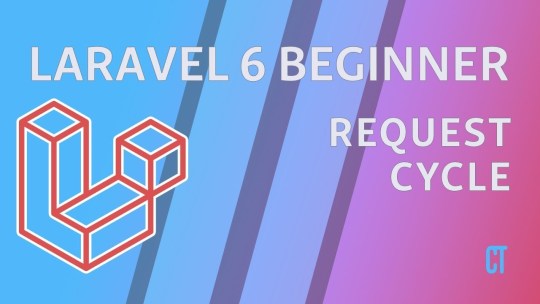
Laravel 6 Beginner – e13 – Request Cycle The request cycle is an important concept to any modern web application. In this episode, we are diving into what it means to use a helper function, the service ... source
#Laravel#laravel 6#laravel 6 crud#laravel 6 for beginners#laravel 6 new features#laravel 6 tutorial#laravel project#laravel request#laravel request lifecycle#laravel response#laravel service container#laravel services#PHP Laravel#request laravel#request life cycle in laravel
0 notes
Text
Web Development and Types of Development
Web improvement
Under broad, web improvement incorporates all the exercises related with creating sites with intranet and web facilitating. Website composition, web content, customer side and worker side programming, and data security usage, among different assignments, are remembered for the web advancement measure. Site advancement mastery is worldwide in a developing business sector and very generously compensated as well, delivering developments an incredible profession opportunity. As you would not require a standard college degree to get qualified, it is among the most promptly accessible more significant compensation areas. With a continuous arrangement of an inside and expert web spaces, we can consider the To be as an assortment of an enormous assortment. Either at the hour of its development, the Web should turn into a stage to confer data to people in general. Be that as it may, presently it has trusted that a critical advance will turn into a spot whereby sites and web applications interface, communicate and draw in with clients around the world. Indeed, even now, notwithstanding web efficiency, organizations that run the web, dominating their current to world creation limit. The web has now become a matchless stage, even with kinds of items and administrations people can buy or trade that. This equivalent life cycle through web advancement plans sites that cycle the business just with clients or even the organization. Before starting now and into the foreseeable future and deciding the extension and determinations of the web application, the thoughts are refreshed and reconsidered. The organizations are known a stride ahead in characterizing the market details, beginning with the real formation of web improvement. Each web designer can make its own web improvement organization in Lahore in the event that he has a financial plan and can broaden his business by presenting his item on the lookout. Web advancement is a particular line of examination that gives a comprehension of the item for web improvement and all other related cycles. Web engineers couldn't deliver an ideal site on request immediately. They ought to be imparted and permitted to appreciate the HTTP solicitations' careful necessities. Software engineers make far reaching web applications and get familiar with the usefulness which interfaces including its web application and introduce it carefully for speedier business handling. These days each business needs a site for developing the business, and you can enlist an organization or independent for your site. A web advancement organization in Pakistan can assist with developing organizations for individuals.

Distinction between front end improvement and backend advancement
Front end improvement
HTML, CSS and JavaScript are utilized. From the drawing table, they take a thought and change it into training. The front-end engineer, who builds up a progression of ventures that predicament and structure the components, make them all look great or make intuitiveness, takes about what you see, and what do you use, for example, with the realistic side of the site, this equivalent drop-down menu and the content. Such projects are overseen by a program.
Sponsored end advancement
This is the place the information is gathered, and there would not be any fronted without such information. The organization sponsored includes the site's host worker, an application that oversees it, and afterward a data set to store the data. To guarantee that the worker, the product, just as the workers, run easily along, the sponsored engineer utilizes PC programming. This sort of improvement needs to break down whatever they has of an organization are and give viable options in contrast to coding. They pick various worker side dialects, for example, Ruby, PHP, Python, Laravel Framework, and do all these amazing things. A web improvement organization in Pakistan must have appropriate information on building up a site for customers. Backend improvement is fascinating, and it's brimming with rationale. Web Development Company in Lahore has master engineers which are helping the organization to develop.
Web Development Lifecycle
There is a web improvement life cycle that is utilizing for advancement and following this web improvement office can fabricate an appealing site.
Starting advance/Consultation
The underlying counsel expects to comprehend the significant level business necessities, the volume of web advancement, the execution timetable required, and the complete feasibility, web composition including the improvement of spending plan of the undertaking.
Particular of Projects
Both the client and the site advancement group, the organization prerequisites of the proposed framework becomes iterative cycle characterized and recorded as High-Level necessity examination. Here, the consideration is by all accounts on the applicable business rules and results. The framework execution, how well the prerequisites become really conveyed, is proposed for use. When acknowledged, this paper would shape the reason for the accompanying periods of the cycle of web creation.
Site Architecture
Site design alludes to the way, we fabricate a site to guarantee that our business needs are satisfied while providing our clients with a superior encounter. The two sites have an IA, however that additionally requires the whole look of the design of a site: convenience. Plan of Interactions. Improvement of a User Interface.
Web composition cycle
Expectations from that sort of cycle have a more grounded center generally around website composition of the framework, incorporate models or models of that equivalent showcases which contains the location, joined with auxiliary changes that will energize both the Client and programming engineers, creators, and cycle improvement groups to see unmistakably how the site will work from the client and overseer perspective.
Resemblance of substance/Material
Any content and graphical substance required for all the site must be created or gained by the Customer. Administrator usefulness which empowers the client to adjust the total substance of the site from either the gadget dispatch on either an ordinary premise should have been appropriately educated determined in the High-Level Specifications Specification, as expressed previously.
Testing and quality affirmation
Numerous parts of testing are taken out during the cycle, including gadget and volume testing-to ensure that specific segments cooperate inside the web application and in this manner can effectively fulfill that both introductory and foreseen potential prerequisites all the opportunity to customer approval Test and close down. There are numerous types of testing required all through that cycle that is past the span of such an execution, for example, cross-program tests and security testing-all of which lead to simply the conveyance top notch site or client care. Web improvement organizations in Lahore have a quality confirmation group to check the nature of sites. Web Development Company in Lahore web Development Company in Pakistan.
0 notes
Link
Nuxt.js provides an Axios module for easy integration with your application. Axios is a promise-based HTTP client that works in the browser and Node.js environment or, in simpler terms, it is a tool for making requests (e.g API calls) in client-side applications and Node.js environment. In this tutorial, we’re going to learn how to use the Axios module and how to make a request on the server-side using asyncData and fetch. These two methods make a request on the server-side but they have some differences which we’re also going to cover. Finally, we’ll learn how to perform authentication and secure pages/routes using the auth module and auth middleware. This article requires basic knowledge of Nuxtjs and Vuejs as we’ll be building on top of that. For those without experience with Vuejs, I recommend you start from their official documentation and the Nuxt official page before continuing with this article.
What Is The Nuxt.js Axios Module?
According to the official Documentation,
“It is a Secure and easy Axios integration with Nuxt.js.”
Here are some of its features:
Automatically set base URL for client-side & server-side.
Proxy request headers in SSR (Useful for auth).
Fetch Style requests.
Integrated with Nuxt.js Progressbar while making requests.
To use the axios module in your application, you will have to first install it by using either npm or yarn. YARN
yarn add @nuxtjs/axios
NPM
npm install @nuxtjs/axios
Add it into your nuxt.config.js file:
modules: [ '@nuxtjs/axios', ], axios: { // extra config e.g // BaseURL: 'https://link-to-API' }
The modules array accepts a list of Nuxt.js modules such as dotenv, auth and in this case, Axios. What we’ve done is to inform our application that we would be using the Axios module, which we reference using @nuxtjs/axios. This is then followed by the axios property which is an object of configurations like the baseURL for both client-side and server-side. Now, you can access Axios from anywhere in your application by calling this.$axios.method or this.$axios.$method. Where method can be get, post, or delete.
Making Your First Request Using Axios
For this tutorial, I’ve put together a simple application on Github. The repository contains two folders, start and finish, the start folder contains all you need to get right into the tutorial. The finish folder contains a completed version of what we would be building. After cloning the repo and opening the start folder, we would need to install all our packages in the package.json file so open your terminal and run the following command:
npm install
Once that is done, we can start our app using the npm run dev command. This is what you should see when you go to localhost:3000.
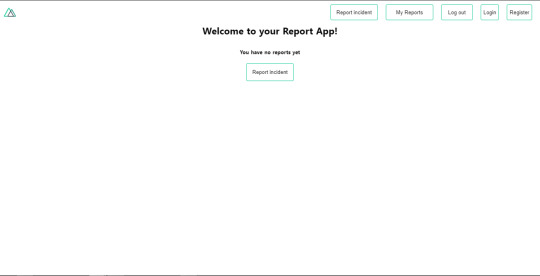
Our application’s landing page. (Large preview)
The next thing we have to do is to create a .env file in the root folder of our application and add our API URL to it. For this tutorial, we’ll be using a sample API built to collect reports from users.
API_URL=https://ireporter-endpoint.herokuapp.com/api/v2/
This way, we do not have to hard code our API into our app which is useful for working with two APIs (development and production). The next step would be to open our nuxt.config.js file and add the environmental variable to our axios config that we added above.
/* ** Axios module configuration */ axios: { // See https://github.com/nuxt-community/axios-module#options baseURL: process.env.API_URL, },
Here, we tell Nuxt.js to use this baseURL for both our client-side and server-side requests whenever we use this Axios module. Now, to fetch a list of reports, let us open the index.vue file and add the following method to the script section.
async getIncidents() { let res = await this.$store.dispatch("getIncidents"); this.incidents = res.data.data.incidents; }
What we have done is to create an async function that we call getIncidents() and we can tell what it does from the name — it fetches a list of incidents using the Vuex store action method this.$store.dispatch. We assign the response from this action to our incidents property so we can be able to make use of it in the component. We want to call the getIncidents() method whenever the component mounts. We can do that using the mounted hook.
mounted() { this.getIncidents() }
mounted() is a lifecycle hook that gets called when the component mounts. That will cause the call to the API to happen when the component mounts. Now, let us go into our index.js file in our store and create this action where we’ll be making our Axios request from.
export const actions = { async getIncidents() { let res = await this.$axios.get('/incidents') return res; } }
Here, we created the action called getIncidents which is an async function, then we await a response from the server and return this response. The response from this action is sent back to our getIncidents() method in our index.vue file. If we refresh our application, we should now be able to see a long list of incidents rendered on the page.
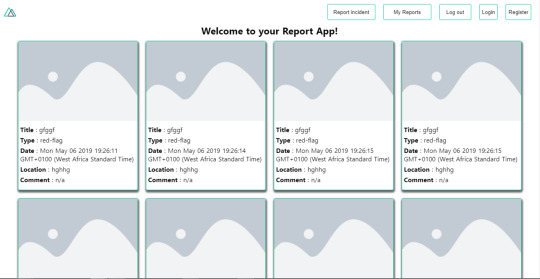
List of incidents on landing page. (Large preview)
We have made our first request using Axios but we won’t stop there, we are going to be trying out asyncData and fetch to see the differences between them and using Axios.
AsyncData
AsyncData fetches data on the server-side and it’s called before loading the page component. It does not have access to this because it is called before your page component data is created. this is only available after the created hook has been called so Nuxt.js automatically merges the returned data into the component’s data. Using asyncData is good for SEO because it fetches your site’s content on the server-side and also helps in loading content faster. Note that asyncData method can only be used in the pages folder of your application as it would not work in the components folder. This is because asyncData hook gets called before your component is created.
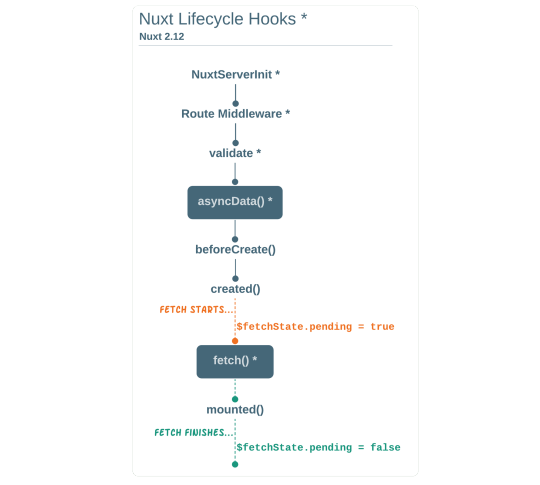
Image from Nuxt blog. (Large preview)
Let us add asyncData to our index.vue file and observe how fast our incidents data loads. Add the following code after our components property and let us get rid of our mounted hook.
async asyncData({ $axios }) { let { data } = await $axios.get("/incidents"); return { incidents: data.data.incidents }; }, // mounted() { // this.getIncidents(); // },
Here, the asyncData method accepts a property from the context $axios. We use this property to fetch the list of incidents and the value is then returned. This value is automatically injected into our component. Now, you can notice how fast your content loads if you refresh the page and at no time is there no incident to render.
Fetch
The Fetch method is also used to make requests on the server-side. It is called after the created hook in the life cycle which means it has access to the component’s data. Unlike the asyncData method, the fetch method can be used in all .vue files and be used with the Vuex store. This means that if you have the following in your data function.
data() { return { incidents: [], id: 5, gender: 'male' }; }
You can easily modify id or gender by calling this.id or this.gender.
Using Axios As A Plugin
During the process of development with Axios, you might find that you need extra configuration like creating instances and interceptors for your request so your application can work as intended and thankfully, we can do that by extending our Axios into a plugin. To extend axios, you have to create a plugin (e.g. axios.js) in your plugins folder.
export default function ({ $axios, store, redirect }) { $axios.onError(error => { if (error.response && error.response.status === 500) { redirect('/login') } }) $axios.interceptors.response.use( response => { if (response.status === 200) { if (response.request.responseURL && response.request.responseURL.includes('login')) { store.dispatch("setUser", response); } } return response } ) }
This is an example of a plugin I wrote for a Nuxt application. Here, your function takes in a context object of $axios, store and redirect which we would use in configuring the plugin. The first thing we do is to listen for an error with a status of 500 using $axios.onError and redirect the user to the login page. We also have an interceptor that intercepts every request response we make in our application checks if the status of the response we get is 200. If that is true we proceed and check that there is a response.request.responseURL and if it includes login. If this checks out to be true, we then send this response using our store’s dispatch method where it then mutated in our state. Add this plugin to your nuxt.config.js file:
plugins: [ '~/plugins/axios' ]
After doing this, your Axios plugin would intercept any request you make and check if you have defined a special case for it.
Introduction To The Auth Module
The auth module is used for performing authentication for your Nuxt application and can be accessed from anywhere in your application using $this.auth. It is also available in fetch, asyncData, middleware and NuxtInitServer from the context object as $auth. The context provides additional objects/params from Nuxt to Vue components and is available in special nuxt lifecycle areas like those mentioned above. To use the auth module in your application, you would have to install it using yarn or npm. YARN
yarn add @nuxtjs/auth
NPM
npm install @nuxtjs/auth
Add it to your nuxt.config.js file.
modules: [ '@nuxtjs/auth' ], auth: { // Options }
The auth property accepts a list of properties such as strategies and redirect. Here, strategies accepts your preferred authentication method which can be:
local For username/email and password-based flow.
facebook For using Facebook accounts as a means of authentication.
Github For authenticating users with Github accounts.
Google For authenticating users with Google accounts.
Auth0
Laravel Passport
The redirect property accepts an object of links for:
login Users would be redirected to this link if login is required.
logout Users would be redirected here if after logout current route is protected.
home Users would be redirected here after login.
Now, let us add the following to our nuxt.config.js file.
/* ** Auth module configuration */ auth: { redirect: { login: '/login', logout: '/', home: '/my-reports' }, strategies: { local: { endpoints: { login: { url: "/user/login", method: "post", propertyName: "data.token", }, logout: false, user: false, }, tokenType: '', tokenName: 'x-auth', autoFetchUser: false }, }, }
Please note that the auth method works best when there is a user endpoint provided in the option above. Inside the auth config object, we have a redirect option in which we set our login route to /login, logout route to / and home route to /my-reports which would all behave as expected. We also have a tokenType property which represents the Authorization type in the header of our Axios request. It is set to Bearer by default and can be changed to work with your API. For our API, there is no token type and this is why we’re going to leave it as an empty string. The tokenName represents the Authorization name (or the header property you want to attach your token to) inside your header in your Axios request. By default, it is set to Authorization but for our API, the Authorization name is x-auth. The autoFetchUser property is used to enable user fetch object using the user endpoint property after login. It is true by default but our API does not have a user endpoint so we have set that to false. For this tutorial, we would be using the local strategy. In our strategies, we have the local option with endpoints for login, user and logout but in our case, we would only use the *login* option because our demo API does not have a *logout* endpoint and our user object is being returned when *login* is successful. Note: The auth module does not have a register endpoint option so that means we’re going to register the traditional way and redirect the user to the login page where we will perform the authentication using this.$auth.loginWith. This is the method used in authenticating your users. It accepts a ‘strategy’ (e.g local) as a first argument and then an object to perform this authentication with. Take a look at the following example.
let data { email: '[email protected]', password: '123456' } this.$auth.loginWith('local', { data })
Using The Auth Module
Now that we have configured our auth module, we can proceed to our registration page. If you visit the /register page, you should see a registration form.
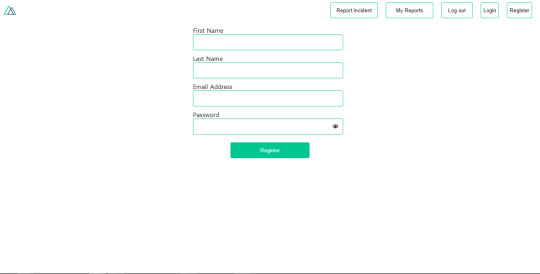
Register page. (Large preview)
Let us make this form functional by adding the following code:
methods: { async registerUser() { this.loading = true; let data = this.register; try { await this.$axios.post("/user/create", data); this.$router.push("/login"); this.loading = false; this.$notify({ group: "success", title: "Success!", text: "Account created successfully" }); } catch (error) { this.loading = false; this.$notify({ group: "error", title: "Error!", text: error.response ? error.response.data.error : "Sorry an error occured, check your internet" }); } } }
Here, we have an async function called registerUser which is tied to a click event in our template and makes an Axios request wrapped in a try/catch block to an endpoint /user/create. This redirects to the /login page and notifies the user of a successful registration. We also have a catch block that alerts the user of any error if the request is not successful. If the registration is successful, you would be redirected to the login page.
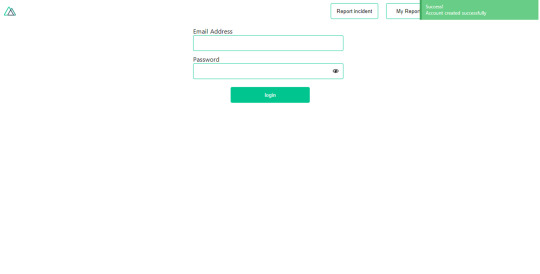
Login page with notification component. (Large preview)
Here, we’re going to make use of auth authentication method this.$auth.loginWith('local', loginData) after which we would use the this.$auth.setUser(userObj) to set the user in our auth instance. To get the login page working, let’s add the following code to our login.vue file.
methods: { async logIn() { let data = this.login; this.loading = true; try { let res = await this.$auth.loginWith("local", { data }); this.loading = false; let user = res.data.data.user; this.$auth.setUser(user); this.$notify({ group: "success", title: "Success!", text: "Welcome!" }); } catch (error) { this.loading = false; this.$notify({ group: "error", title: "Error!", text: error.response ? error.response.data.error : "Sorry an error occured, check your internet" }); } } }
We created an async function called logIn using the auth method this.$auth.loginWith('local, loginData). If this login attempt is successful, we then assign the user data to our auth instance using this.$auth.setUser(userInfo) and redirect the user to the /my-report page. You can now get user data using this.$auth.user or with Vuex using this.$store.state.auth.user but that’s not all. The auth instance contains some other properties which you can see if you log in or check your state using your Vue dev tools. If you log this.$store.state.auth to the console, you’ll see this:
{ "auth": { "user": { "id": "d7a5efdf-0c29-48aa-9255-be818301d602", "email": "[email protected]", "lastName": "Xo", "firstName": "Tm", "othernames": null, "isAdmin": false, "phoneNumber": null, "username": null }, "loggedIn": true, "strategy": "local", "busy": false } }
The auth instance contains a loggedIn property that is useful in switching between authenticated links in the nav/header section of your application. It also contains a strategy method that states the type of strategy the instance is running (e.g local). Now, we will make use of this loggedIn property to arrange our nav links. Update your navBar component to the following:
<template> <header class="header"> <div class="logo"> <nuxt-link to="/"> <Logo /> </nuxt-link> </div> <nav class="nav"> <div class="nav__user" v-if="auth.loggedIn"> <p></p> <button class="nav__link nav__link--long"> <nuxt-link to="/report-incident">Report incident</nuxt-link> </button> <button class="nav__link nav__link--long"> <nuxt-link to="/my-reports">My Reports</nuxt-link> </button> <button class="nav__link" @click.prevent="logOut">Log out</button> </div> <button class="nav__link" v-if="!auth.loggedIn"> <nuxt-link to="/login">Login</nuxt-link> </button> <button class="nav__link" v-if="!auth.loggedIn"> <nuxt-link to="/register">Register</nuxt-link> </button> </nav> </header> </template> <script> import { mapState } from "vuex"; import Logo from "@/components/Logo"; export default { name: "nav-bar", data() { return {}; }, computed: { ...mapState(["auth"]) }, methods: { logOut() { this.$store.dispatch("logOut"); this.$router.push("/login"); } }, components: { Logo } }; </script> <style></style>
In our template section, we have several links to different parts of the application in which we are now using auth.loggedIn to display the appropriate links depending on the authentication status. We have a logout button that has a click event with a logOut() function attached to it. We also display the user’s email gotten from the auth property which is accessed from our Vuex store using the mapState method which maps our state auth to the computed property of the nav component. We also have a logout method that calls our Vuex action logOut and redirects the user to the login page. Now, let us go ahead and update our store to have a logOut action.
export const actions = { // .... logOut() { this.$auth.logout(); } }
The logOut action calls the auth logout method which clears user data, deletes tokens from localStorage and sets loggedIn to false. Routes like /my-reports and report-incident should not be visible to guests but at this point in our app, that is not the case. Nuxt does not have a navigation guard that can protect your routes, but it has is the auth middleware. It gives you the freedom to create your own middleware so you can configure it to work the way you want. It can be set in two ways:
Per route.
Globally for the whole app in your nuxt.config.js file.
router: { middleware: ['auth'] }
This auth middleware works with your auth instance so you do not need to create an auth.js file in your middleware folder. Let us now add this middleware to our my-reports.vue and report-incident.vue files. Add the following lines of code to the script section of each file.
middleware: 'auth'
Now, our application would check if the user trying to access these routes has an auth.loggedIn value of true. It’ll redirect them to the login page using our redirect option in our auth config file — if you’re not logged in and you try to visit either /my-report or report-incident, you would be redirected to /login. If you go to /report-incidents, this is what you should see.
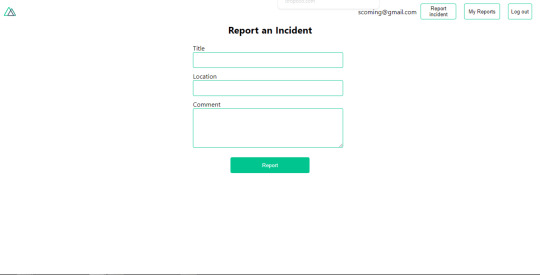
Report incident page. (Large preview)
This page is for adding incidents but that right now the form does not send incident to our server because we are not making the call to the server when the user attempts to submit the form. To solve this, we will add a reportIncident method which will be called when the user clicks on Report. We’ll have this in the script section of the component. This method will send the form data to the server. Update your report-incident.vue file with the following:
<template> <section class="report"> <h1 class="report__heading">Report an Incident</h1> <form class="report__form"> <div class="input__container"> <label for="title" class="input__label">Title</label> <input type="text" name="title" id="title" v-model="incident.title" class="input__field" required /> </div> <div class="input__container"> <label for="location" class="input__label">Location</label> <input type="text" name="location" id="location" v-model="incident.location" required class="input__field" /> </div> <div class="input__container"> <label for="comment" class="input__label">Comment</label> <textarea name="comment" id="comment" v-model="incident.comment" class="input__area" cols="30" rows="10" required ></textarea> </div> <input type="submit" value="Report" class="input__button" @click.prevent="reportIncident" /> <p class="loading__indicator" v-if="loading">Please wait....</p> </form> </section> </template> <script> export default { name: "report-incident", middleware: "auth", data() { return { loading: false, incident: { type: "red-flag", title: "", location: "", comment: "" } }; }, methods: { async reportIncident() { let data = this.incident; let formData = new FormData(); formData.append("title", data.title); formData.append("type", data.type); formData.append("location", data.location); formData.append("comment", data.comment); this.loading = true; try { let res = await this.$store.dispatch("reportIncident", formData); this.$notify({ group: "success", title: "Success", text: "Incident reported successfully!" }); this.loading = false; this.$router.push("/my-reports"); } catch (error) { this.loading = false; this.$notify({ group: "error", title: "Error!", text: error.response ? error.response.data.error : "Sorry an error occured, check your internet" }); } } } }; </script> <style> </style>
Here, we have a form with input fields for title, location, and comment with two-way data binding using v-model. We also have a submit button with a click event. In the script section, we have a reportIncident method that collects all the information provided in the form and is sent to our server using FormData because the API is designed to also accept images and videos. This formData is attached to a Vuex action using the dispatch method, if the request is successful, you get redirected to /my-reports with a notification informing you that this request was successful otherwise, you would be notified of an error with the error message. At this point, we don’t have reportIncident action in our store yet so in your browser console, you would see an error if you try to click submit on this page.

Vuex error message. (Large preview)
To fix this, add the reportIncident action your index.js file.
export const actions = { // ... async reportIncident({}, data) { let res = await this.$axios.post('/incident/create', data) return res; } }
Here, we have a reportIncident function that takes in an empty context object and the data we’re sending from our form. This data is then attached to a post request that creates an incident and returns back to our report-incident.vue file. At this point, you should be able to add a report using the form after which you would be redirected to /my-reports page.
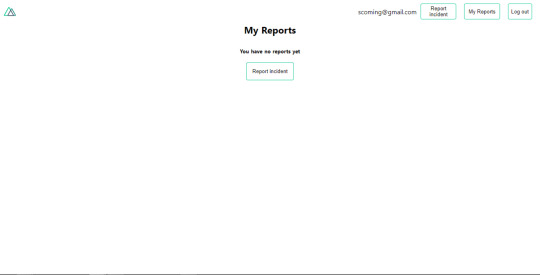
My reports page empty. (Large preview)
This page should display a list of incidents created by the user but right now it only shows what we see above, let’s go ahead to fix that. We’re going to be using the fetch method we learned about to get this list. Update your my-reports.vue file with the following:
<script> import incidentCard from "@/components/incidentCard.vue"; export default { middleware: "auth", name: "my-reports", data() { return { incidents: [] }; }, components: { incidentCard }, async fetch() { let { data } = await this.$axios.get("/user/incidents"); this.incidents = data.data; } }; </script>
Here, we use fetch method to get user-specific incidents and assign the response to our incidents array. If you refresh your page after adding an incident, you should see something like this.
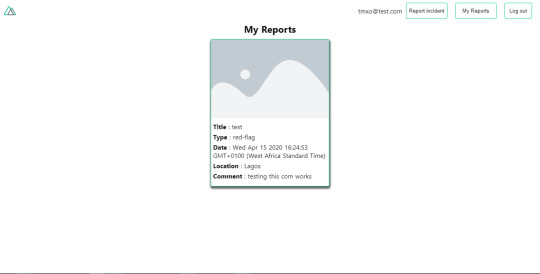
My Reports page with a report. (Large preview)
At this point, we would notice a difference in how fetch method and asyncData loads our data.
Conclusion
So far, we have learned about the Axios module and all of its features. We have also learned more about asyncData, and how we can fetch both of them together despite their differences. We’ve also learned how to perform authentication in our application using the auth module and how to use the auth middleware to protect our routes. Here are some useful resources that talk more about all we’ve covered.
Getting started with meta tags in Nuxjs.
Using the dotenv module in Nuxt.
Using Fetch in your Nuxt app.
Getting started with asyncData.
0 notes
Text
Everything You Want to Know About Full-stack Development All About Full Stack Development
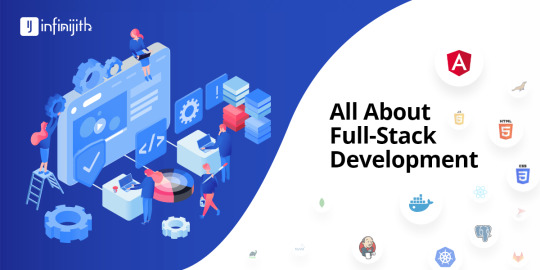
When you are looking for someone who can take care of your whole web or mobile application development process, then you must come across the term full-stack development or full-stack developers.
Certainly, why not since the internet makes everything available at our fingertips. So, you may come across the term full-stack development.
As you think to develop a new programming application it needs a team of specialists collaborates & works together with complex technologies.
But in this modern, it is simplified with a technical person who is a “know all”, has a wealth of information and experience handling all the technologies required in software or application development.
However, you need to know completely about full-stack development before getting to it for your web or mobile application development.
Let us discuss want makes full-stack development a special one and who it can be done.
What is Full Stack Development
Full stack development refers to the development of the front-end and back-end of an application that can be used or delivered to the customer. In general, full-stack web development can be categorized as three layers as follows
The Presentation Layer (deals with UI or UX)
Business Logic Layer (deals with data validation) and
Database Layer (deals with data storage)
In recent times, full stack development becomes more popular than any other development approaches. A few days back, the developer used to learn specific techniques and master that for years. Which needed to have a bunch of developers for single applications who are specialized in the particular technology.
But full stack development changed everything with the arrival of powerful libraries, which makes the development process easy and faster. And more efficiently a single developer can handle multiple things.
Earlier the life cycle for website development from Photoshop to Staging server was too long, but with full stack development, it has reduced 3 times lesser. Many purposes can be effectively achieved through this process.
Front-end Development
In software, the user interface is what visible to the users/customers. This want called as front-end of the software.
An front-end developer is responsible for the creation of visual elements like how the software or an app will look, interact and operate with the user.
Back-end Development
On the other hand, back-end what makes the software function well.
The developers who work at the back-end spend a lot of time creating and working with databases. To develop a user-driven software, you need both.
The full-stack developer is the one who is a pro in both the technical domains. It is also their responsibility to know every aspect of development including front-end, back-end, database queries, and various operating systems.
Technology That is Key for Full-Stack Development:
Front-end
Back end
Database
Middleware
DevOps
Project management tools
Version control
1. Front End Technologies & Framework
A user interface is the visible part of a website or web application which in-tern responsible for user experience is the front-end. And the user of the application will directly interact with the front-end portion of the web application or website.
Languages and technologies which are used to build front-end portion are discussed below:
HTML: Hyper Text Markup Language.
The design of front-end for web pages done using markup language. HTML is the combination of hypertext and markup language. Hypertext defines the link between the web pages.
The markup language is used to define the text documentation within tag which defines the structure of web pages.
CSS: Cascading Style Sheets
The major responsibility of CSS is to simplify the process of making web pages presentable and fast as possible.
With help of CSS, you can apply different styles to your web pages. CSS enables you to do any style for your web page independent of the HTML which on the other hand makes up each web page.
JavaScript
JavaScript is used to make the application interactive for the user. It is quite popular with a different framework. It is used to enhancing the functionality of a website to run cool games and web-based software.
Front End Frameworks and Libraries:
Angular
Angular is mainly used to develop single-page web applications (SPAs).
It is an open-source framework.
It is a continuously growing and expanding framework which provides better ways for developing web applications. It changes the static HTML to dynamic HTML.
Moreover, Angular is an open-source project that can be used freely and also changed by anyone as per their needs. It is like HTML which is extended with Directives and attributes, and data is bound with HTML.
To know why to use Angular for your application development refer our blog Advantage of choosing angular.
React.JS:
A JavaScript for developing a user interface which is a declarative, effective, and more flexible to use.
It is also an open-source, and it is a component-based front-end library that responsible view layer of the application.
React application is made of multiple components, in that each element is accounted for rendering a small and reusable piece of HTML.
Go through our Reason why ReactJS is preferred to know what are the advantage of using React for development.
jQuery
jQuery simplifies the interactions between an HTML/CSS document, or more precisely the Document Object Model (DOM), and JavaScript.
It is an open-source JavaScript library. The major advantage of having jQuery is it simplifies the HTML task such as document traversing and manipulation, browser event handling, DOM animations, Ajax interactions, and cross-browser JavaScript development.
SASS:
It is an extension of CSS language which is more reliable, mature and robust. It extends the functionality of existing CSS by changing variables, inheritance, and nesting with ease.
It is compatible with all the versions of CSS.
2. Back end Technologies & Framework
It refers to the server-side development of web applications or websites focusing primarily on how the website works. It is responsible for managing the database through queries and APIs by client-side commands. This type of website mainly consists of three parts front end, back end, and database.
Languages and frameworks which are used to build a back-end are discussed below:
PHP: It is a back-end server-side scripting language designed for web development. PHP code is executed on the server side so it is called server-side scripting language.
Java: Java is one of the most popular and widely used programming languages and platforms. It is highly scalable. Java components are easily available.
Python: It is easier to learn and you can achieve more functionalities with less code. Especially for web development due to its amazing readability and efficiency. It is preferred due to fact the python code doesn't break when minor mistake or error has occurred.
JavaScript: JavaScript is used to make the web pages alive. And it can be used as both front end and back end programming languages.
Node.JS: It helps in executing JavaScript code outside of a browser. NodeJS is not a framework, and it’s not a programming language. It is a runtime environment. Most of the people are confused and understand it’s a framework or a programming language. It used for building back-end services like APIs like Web App or Mobile App.
Back End Framework
The list of back end frameworks is Express, Django, Rails, Laravel, Spring, etc.
JavaScript is essential for all stacks as it is the dominant technology on Web.
3. Database
The database is a data structure that stores the data in an organized format. It processes of retrieval, insertion, and deletion of data from the database are done simple if data are organized a form of tables, views, schemas, reports, etc. It is more are like a collection of inter-related data under one set.
Oracle: Oracle database is the collection of data that is treated as a unit. The purpose of this database is to store and retrieve information related to the query. It is a database server and used to manage information.
MongoDB: MongoDB, is an open-source document-oriented database. Since its a NoSQL database so it not look the table or relational database structure. It puts a different mechanism for storage and retrieval of data.
SQL: Structured Query Language is a standard database language that is used to create, maintain and retrieve the relational database.
4. Middleware
It is software that lies between an operating system and the applications running on it.
In distributed applications, it enables communication and data management. So, itis Calles as a hidden translation layer.
All network-based requests are essential attempts to interact with back-end data.
That data might be something as simple as an image to display or a video to play, or it could be as complex as a history of banking transactions.
The requested data can take on many forms and may be stored in a variety of ways, such as coming from a file server, fetched from a message queue or persisted in a database.
It is middleware responsibility is to enable and ease access to back-end resources.
5. DevOps
To automate the processes between software development and IT teams A set of practices called DevOps is used. DevOps enables them to build, test, and release software faster and more reliable.
In recent times, DevOps becomes more popular because of its ability to faster software releases, the ability to solve critical issues quickly, and better manage unplanned work. DevOps process is trusted and believed it will give a better outcome from developers.
Some of the DevOps character include increased collaboration, decreasing silos, shared responsibility, autonomous teams, and valuing feedback.
It is an extension of agile values since it uses many same as in agile values.
DevOps Tools
DevOps uses various tools to achieve consistency in the work process to deliver better results.
Some of the tools are as follows configuration management, test and build systems, application deployment, version control, and monitoring tools. Some processes are done continuous like integration, delivery, and deployment which may require different tools.
Still not convinced on using DevOps then read our DevOps and Cloud: The Key to Unlocking Faster Development to grab why DevOps is important
6. Project Management Tools
Project management involves understanding all the aspects involved in the development of the application or software.
It cores a wide variety of topics from people management to strategy and to communications.
All these process needs specialized tools and technologies to handle in the right manner.
Project management tools are used at a different stage of development. They include, but are not limited to:
Planning/Scheduling - Before starting any process there should be clear planning and evaluation. It let you have a tool that allows you to plan and assign work as with tasks, subtasks, folders, templates, workflows, and calendars.
Collaboration - Technologies have evolved long so, email is no longer the only tool of communication. Tools for assign tasks, add comments, organize dashboards, and for proofing & approvals has emerged and replaced emails.
Documentation - You can reduce missing files with file management features: editing, versioning, & storage of all files. Which also increases the efficiency of having retrieving the missed data.
Evaluation - Keep Track of all the process to evaluate the correctness.
You do not use any tools for Project management, then teams and clients are confused and unclear bout objectives. It also results in poor quality deliverables, projects going over budget and delivered late.
Project management enabled the team to ensure the right stuff is delivered; stuff that delivers real return on investment, and that makes happy clients.
7. Version Control
Technologies tens to evolve continues with new features and functionalities. If you have developed an application in particular technologies when a new feature is added the application must adapt to it as well. It becomes a challenging task for developers.
But version control systems help them to manage changes to source code over time. This is possible because it keeps track of every modification to the code in a special kind of database for every software.
Even if developers made a mistake, they can turn back the clock and compare earlier versions of the code. This intern helps fix the mistake.
The developer uses it for all non-binary files to enable multiple developers or teams to work in an isolated fashion without impacting the work of others.
It helps in isolation that the intern enables features to be built, tested, integrated or even scrapped in a controllable, transparent and maintainable manner.
Version Control Tools:
GitHub
GitLab
CVS Version Control
Popular Stacks:
MEAN Stack: MongoDB, Express, AngularJS, and Node.js.
MERN Stack: MongoDB, Express, ReactJS, and Node.js
Django Stack: Django, Python, and MySQL as Database.
Rails or Ruby on Rails: Uses Ruby, PHP, and MySQL.
LAMP Stack: Linux, Apache, MySQL, and PHP.
An Important Requirement to be a Full-Stack Developer
To write the front-end code in HTML, CSS, JavaScript
To create and use APIs
To write back-end code in Ruby, Python/ Java, PHP
Well versed to working with infrastructures like hardware and OS
Solve and understanding queries related to databases
Manage project and coordinate with the client
Even a full-stack developer requires some more skills to master the application development. Some as follows:
The Architecture of Web Application:
A full-stack website application developer must have a basic knowledge of web application architecture. It should allow him or her to figure out the type of data that needs to be structured, the structure of the code, where and how to perform various computational tasks. This would help in developing complex applications.
Basic Design Ability
Design skill is essential for good developers. Have a piece of knowledge in the principle and power of basic design prototype, UI design, UX design are also needed to understand the development lifecycle.
A full-stack developer should also have knowledge of the following innovation skills:
Thinking capacity to solve issues on time
Good communication skills to interact with the team efficiently
Great creativity for solving the problem with sufficient solutions
Time management skills to increase the productivity.
Need to know about different technologies
Can see the vision of the business and understands the customer’s requirement
Why Go for Full-stack Development?
1. Utilization of Multiple Technologies for A Project
Full stack development comes with its own perks. Most of the developers in full-stack are well adept at languages and technologies. Full-stack developers have a great experience, as well as expertise in all the languages. This means it becomes the responsibility of the developer to ensure that the website looks well, as well as performs as expected.
In Full stack development, developers or a team of developers will convert designs into front-end code and even working with animation and graphics.
2. Unique Coding with Preferred Tools
Full stack development uses the tools and technologies of their choice for creating and designing unique code. This creates endless opportunities for developers as it does not restrict them to a certain set of tools for development.
3. Easy to Switch
Based on the project requirement, a professional full-stack developer plays the dual role of a front-end and back-end developer. This turns out to be a cost and time saver for a business as all the roles and responsibilities are performed by a single person. If you have a single point of context it will easy to switch.
4. Designing and Development Simultaneously
One of the key takeaways of working with a full stack developer is that they do not restrict to merely development.
They can work well on the entire design structure and perform the necessary updates. Likewise, the experience of a developer comes into play as he takes care of the common errors and bugs beforehand.
5. Cost-Efficient
If you consider hiring a dedicated front-end developer and a back-end developer for a project, it will shoot up the cost of production tenfold. On the other hand, a full stack developer will perform the roles and responsibilities of both, and sometimes, the latter may surpass the efficiency of the former.
6. Designing and Implementation
A full stack developer takes responsibility for the design and development of the project. Given the fact that all the necessary resources are available in-house, the developer can perform his tasks with full potential.
7. Easy Updates
In this digital world, a full stack developer keeps up with emerging trends and technologies. As a result, the developer can grab the updates as soon as they appear on the market and add it to his armor. Faster than someone specializes only in the front end or back end technology.
8. Customized Workflows
It is possible to segment the tasks of design and development in full-stack development. And also customize the process as per requirement. A developer can also switch to any other task as per priority or as per the immediate need of the project.
9. All-In-One Solution
A full stack developer is efficient in not only finding out the root cause of a problem but can also provide solutions for any kind of bottlenecks. It makes this possible with their diverse knowledge of tools and technologies that are used for development.
10. Ideal for Small Scale Business
Full stack development is no less than a blessing for entrepreneurs and smaller to medium businesses of all shapes and kinds. Where a large-scale business may need help from dedicated teams and dedicated front end and back end developers, a front-end developer can take care of all these responsibilities by breaking down the tasks into smaller segments.
Conclusion
Full stack web development will be the finest approach to creating robust websites and applications. Since it enables us to take care of every part of development with a single person.
There is a wide range of tools and framework developers can handpick the resources of his choice.
Infinijith offers you the best full-stack development services irrespective of the platform your business is running. Our full-stack developer can take care of the steps from conception of idea to actually finish your application. If you're looking for a full-stack developer, then Infinijith will be the preferred choice to satisfy all your software needs.
Originally Published at www.infinijith.com on 17 Dec, 2019
0 notes
Text
Modern Tribe: WordPress Engineer

Headquarters: Minneapolis, Minnesota URL: http://m.tri.be/1ahq
The Opportunity
Modern Tribe, is looking for a WordPress Engineer with solid PHP and WordPress experience to join our agency team. Are you a dependable and competent developer with strong communication skills? Are you a quick learner that likes to solve complex problems using WordPress and OOP techniques? We want to meet you!
The WordPress Engineer gig at Modern Tribe will offer you the opportunity to become a core member within our tribe. You will be collaborating with an awesome dev team working on innovative and large scale WordPress installations. We are looking for a backend developer that is already actively working in the WordPress website and plugin development field. You need to be up to speed and knowledgeable about the most recent releases and standards of WordPress. We want you to be as excited and as passionate as we are about what we are creating with the platform.
Experienced WordPress developers only!
Inclusion Statement
Modern Tribe is committed to a culture that embraces diversity and inclusion. We foster an environment of collaboration, open engagement, fairness and respect regardless of differences in age, race, disability, national origin, gender identity, religion, sexual orientation or veteran status. As a hybrid workspace ranging from distributed contractors to traditional employees, we value the unique perspectives and experiences of our global team.
We come from all walks of life. We are small business owners. We are tattoo aficionados and 80’s movie buffs and ex-pats. We are homeschool teachers. We are single parents. We are musicians, college drop-outs, and entrepreneurs. We are travelers, feminists, runners, volunteers, and makers. We are a Modern Tribe.
Everyday we strive to fulfill our motto: live well and do good work. We hope you will consider joining us.
Responsibilities
As a WordPress Engineer at Modern Tribe, some of your key responsibilities will be:
Collaborate with the project strategist and senior backend developers to articulate the best technological solution for the problem at hand
Analyze user story acceptance criteria to ensure technical feasibility and point out potential issues
Manage yourself to make sure you can deliver on time, on budget and on scope
Architect and develop new backend features and plugins, custom functionality, and theme integration
Write high quality code with readability, efficiency and maintainability in mind
Develop and maintain complex WordPress-based applications
Implement complex features using modern PHP code and patterns
Code review the work of other developers
Improve our internal tools, libraries and standards
Actively participate in discipline and scrum meetings
Work with your project team to diagnose and resolve backend bugs and support requests
Personal Competencies
Strong communication skills
Experience working as part of a remote team
Self-motivated, detail-oriented
Strong organizational skills
A methodical approach to all tasks
Ability to prioritize workloads and meet deadlines
Ability to work on multiple projects at the same time and complete tasks in a timely manner
Ability to work remotely with little-to-no supervision is a must
Excited to be part of a team with the potential for a long term relationship
Fluent English speaker
Knowledge & Experience
5+ years experience working as a backend WordPress engineer on production sites
3+ years experience working on WordPress sites
Experience implementing complex WordPress solutions
Familiar with modern PHP (for example: OOP, PHP 7, Composer, PSR’s, Laravel, or Symfony)
Ability to work remotely with little-to-no supervision is a must
Excellent understanding of OOP and better practices
Experience writing code with a focus on security and performance
Experience working with at least one automated testing framework
Demonstrated experience developing on the WordPress platform (for example, one or more of: Solid experience with WordPress methods and development patterns, handling data securely within WordPress, plugin development, or leveraging the REST API)
Thorough understanding of the software development life cycle (i.e. seeing a project through from spec to completion)
Experience working in an agency and/or as a contractor
Bonus Points
Experience with continuous integration and automated deployment pipelines
Experience working with at least one automated testing framework
Experience with WPML
Experience with server technologies like Redis or ElasticSearch
Location
Work from anywhere in North, Central or South America. If your timezone is outside of US business hours but you work at least 4+ hours of overlap each day, let's chat. You must be fluent in English. You just need a computer and a strong wifi signal to support daily video chats with the Tribe.
Compensation
Pay range for this role is $45-$60/hour. This is a freelance contract role 10-15 hours per week. We are always seeking longer relationships with exceptional people. At this time we are unable to work with freelancers who are not already freelancing full time or looking to work additional hours on top of a 40 hour work week.
Perks
We believe that distributed working is a way of life. We understand what it means to work remotely. We offer consistency in expectations, payment, and support. We believe in learning from each other and fostering personal growth. You can expect to learn a lot while working with us.
(Also, if you work enough with us, we’ll bring you on the team trips.)
Who We Are
Modern Tribe, Inc. is a rapidly growing software & design company. We develop custom solutions for some of the world’s largest companies, government institutions and smaller growing organizations. We pride ourselves on our ability to bridge people and technology and to bring the passion and dedication of an entrepreneur to every project. Our team is composed of talented employees and freelancers around North & South America (and a smattering across the globe).
Who You Are
We love working with each other because we have built a culture that suits us well. We work primarily with freelancers and coordinate their talents for large projects. To be on our team, you must be:
HAPPY: Where there is a will, there is a way. Having a positive disposition allows us to achieve great things and to support each other.
HELPFUL: Always looking for ways that you can help others.
CURIOUS: It is essential that you have a passion for learning. Technology changes daily, and life has a way of constantly raising the bar.
ACCOUNTABLE: Our clients expect us to get the right thing done on budget and on time. Communicating expectations and meeting them is the cornerstone of success.
To apply: http://m.tri.be/1ahq
from We Work Remotely: Remote jobs in design, programming, marketing and more https://ift.tt/2OlrD7j from Work From Home YouTuber Job Board Blog https://ift.tt/2XIImUS
0 notes
Text
Senior iOS developer job at Airfrov Anywhere
Airfrov is a peer-peer marketplace that enables Requesters to get any overseas products, with the help of Travellers.
We were featured in CNBC, (twice!), Vulcan Post, The Straits Times as well as many other media. We have won awards such as the Singtel-Samsung Mobile App Challenge 2015, the Most Innovative Startup in Ideas Inc 2014 and the TOP 100 startups in e27.
We aim to build a sharing community that connect people to the best things in life. We are also empowering micro-entrepreneurship, with travellers making enough money to travel for free.
Join us if you believe in delivering happiness, in creating a platform that is not your typical shopping app. A truly unique on-demand, peer-peer service.
In Airfrov, our mission is delivering happiness, and connecting people to the best things in life. As our iOS developer, your work is been used by tens and thousands of users daily. That means, you as the builder, have the power and responsibility, to create the best experience.
This job is targetting Indonesia, Vietnam or Malaysia based Developers. As part of the onboarding program, you are expected to travel to one of our offices in Singapore or Jakarta for training. Subsequent travel may or may not be required.
Job Description
Your day to day job requires you to work closely with the product team for the following:
-Creating of storyboard using Xcode
-Working with Product Manager, UX UI designer, CTO and other developers to understand technical implementation for each sprint cycle.
-Build, code and test based on the designs, and user stories.
-Connecting with RESTful APIs built by our web developers
-Looking at refactoring, improving user experience and technical improvements (Eg. pagination loading, caching of images, loading animation, screen transition, integration of data analytics embedded within the app)
-Bug fixes as well as sharing of best practices, knowledge, and the desire to keep improving
Requirements
-2 years of iOS development in Objective C, using Xcode
-Familiar with Git, or similar versioning tools
-Strong in computing fundamentals and willing to learn
-Able to understand and communicate comfortably in English
Requirements
->2 years of iOS development in Objective C / Swift, using Xcode
-Familiar with Git, or similar versioning tools
-Strong in computing fundamentals and willingness to learn
-Able to understand and communicate comfortably in English
-Detailed minded and care about proper code management
Good to have
-Experience in building E-commerce, or social network apps
-Experience in building React Native, ReactJS app
-Experience in Back-end, PHP Laravel framework
-Experience in automated testing and Test-Driven Development process
From http://www.startupjobs.asia/job/38584-senior-ios-developer-front-end-developers-job-at-airfrov-anywhere
from https://startupjobsasiablog.wordpress.com/2018/05/31/senior-ios-developer-job-at-airfrov-anywhere/
0 notes
Text
Senior iOS developer job at Airfrov Anywhere
Airfrov is a peer-peer marketplace that enables Requesters to get any overseas products, with the help of Travellers.
We were featured in CNBC, (twice!), Vulcan Post, The Straits Times as well as many other media. We have won awards such as the Singtel-Samsung Mobile App Challenge 2015, the Most Innovative Startup in Ideas Inc 2014 and the TOP 100 startups in e27.
We aim to build a sharing community that connect people to the best things in life. We are also empowering micro-entrepreneurship, with travellers making enough money to travel for free.
Join us if you believe in delivering happiness, in creating a platform that is not your typical shopping app. A truly unique on-demand, peer-peer service.
In Airfrov, our mission is delivering happiness, and connecting people to the best things in life. As our iOS developer, your work is been used by tens and thousands of users daily. That means, you as the builder, have the power and responsibility, to create the best experience. This job is targetting Indonesia, Vietnam or Malaysia based Developers. As part of the onboarding program, you are expected to travel to one of our offices in Singapore or Jakarta for training. Subsequent travel may or may not be required.
Job Description
Your day to day job requires you to work closely with the product team for the following:
-Creating of storyboard using Xcode
-Working with Product Manager, UX UI designer, CTO and other developers to understand technical implementation for each sprint cycle.
-Build, code and test based on the designs, and user stories.
-Connecting with RESTful APIs built by our web developers
-Looking at refactoring, improving user experience and technical improvements (Eg. pagination loading, caching of images, loading animation, screen transition, integration of data analytics embedded within the app) -Bug fixes as well as sharing of best practices, knowledge, and the desire to keep improving
Requirements
-2 years of iOS development in Objective C, using Xcode
-Familiar with Git, or similar versioning tools
-Strong in computing fundamentals and willing to learn
-Able to understand and communicate comfortably in English
Requirements
->2 years of iOS development in Objective C / Swift, using Xcode
-Familiar with Git, or similar versioning tools
-Strong in computing fundamentals and willingness to learn
-Able to understand and communicate comfortably in English
-Detailed minded and care about proper code management Good to have
-Experience in building E-commerce, or social network apps
-Experience in building React Native, ReactJS app
-Experience in Back-end, PHP Laravel framework
-Experience in automated testing and Test-Driven Development process
StartUp Jobs Asia - Startup Jobs in Singapore , Malaysia , HongKong ,Thailand from http://www.startupjobs.asia/job/38584-senior-ios-developer-front-end-developers-job-at-airfrov-anywhere
0 notes
Text
Senior Application Developer (Back End) job at Dropee Malaysia
Dropee is a B2B marketplace that brings together suppliers and retailers. With Dropee retailers can now source for products directly from qualified wholesalers, manufacturers and principals at a faster, cheaper and reliable way. Our platform makes it easy for both suppliers and retailers to digitize sales orders, track inventories and fulfilment of goods as well as to access real-time analytical reports. Visit our website at www.dropee.com.
Responsibilities:
To create user information solutions by developing, implementing, and maintaining Internet/intranet applications.
This Senior post requires candidate to be able to lead a team of developers and work with other stakeholders. Other requirements include supporting and develops web application developers by providing advice, coaching and educational opportunities.
Duties:
Define site objectives by analyzing user requirements; envisioning system features and functionality.
Design and develop user interface of the applications by setting relevant expectations and priorities throughout the development life cycle.
Determining design methodologies and tool sets; complete program using languages and software products; designing and conducting tests.
Recommends system solutions.
Integrates applications by designing database architecture and server scripting; studying and establishing connectivity with network systems, search engines, and information servers.
Complete applications development by coordinating requirements, schedules, and activities; contributing to team meetings; troubleshooting development and production problems across multiple environments and operating platforms.
Supports users by developing documentation and assistance tools.
Updates job knowledge by researching new technologies and software products; participating in educational opportunities; reading professional publications; maintaining personal networks; participating in professional organizations.
Enhances organization’s reputation by accepting responsibility of new and different requests; exploring opportunities to add value to job accomplishments.
Must Read:
To apply for this position, you must take an assessment (link below) and submit your resume to [email protected]
Assessment Link: http://bit.ly/dropeebackendquestions
Requirements:
Strong understanding of PHP and MYSQL
Good analytical and problem-solving skills
Basic knowledge of system performance tracking and analytics.
Have experience with Laravel frameworks
Understands OOP and MVC
Have experience with Git
Familiar with Linux and CLI
Familiar with Agile/Scrum approach
StartUp Jobs Asia - Startup Jobs in Singapore , Malaysia , HongKong ,Thailand from http://www.startupjobs.asia/job/35183-senior-application-developer-back-end-back-end-developers-job-at-dropee-malaysia Startup Jobs Asia https://startupjobsasia.tumblr.com/post/168422801749
0 notes
Text
Senior Application Developer (Back End) job at Dropee Malaysia
Dropee is a B2B marketplace that brings together suppliers and retailers. With Dropee retailers can now source for products directly from qualified wholesalers, manufacturers and principals at a faster, cheaper and reliable way. Our platform makes it easy for both suppliers and retailers to digitize sales orders, track inventories and fulfilment of goods as well as to access real-time analytical reports. Visit our website at www.dropee.com.
Responsibilities:
To create user information solutions by developing, implementing, and maintaining Internet/intranet applications.
This Senior post requires candidate to be able to lead a team of developers and work with other stakeholders. Other requirements include supporting and develops web application developers by providing advice, coaching and educational opportunities.
Duties:
Define site objectives by analyzing user requirements; envisioning system features and functionality.
Design and develop user interface of the applications by setting relevant expectations and priorities throughout the development life cycle.
Determining design methodologies and tool sets; complete program using languages and software products; designing and conducting tests.
Recommends system solutions.
Integrates applications by designing database architecture and server scripting; studying and establishing connectivity with network systems, search engines, and information servers.
Complete applications development by coordinating requirements, schedules, and activities; contributing to team meetings; troubleshooting development and production problems across multiple environments and operating platforms.
Supports users by developing documentation and assistance tools.
Updates job knowledge by researching new technologies and software products; participating in educational opportunities; reading professional publications; maintaining personal networks; participating in professional organizations.
Enhances organization’s reputation by accepting responsibility of new and different requests; exploring opportunities to add value to job accomplishments.
Must Read:
To apply for this position, you must take an assessment (link below) and submit your resume to [email protected]
Assessment Link: http://bit.ly/dropeebackendquestions
Requirements:
Strong understanding of PHP and MYSQL
Good analytical and problem-solving skills
Basic knowledge of system performance tracking and analytics.
Have experience with Laravel frameworks
Understands OOP and MVC
Have experience with Git
Familiar with Linux and CLI
Familiar with Agile/Scrum approach
From http://www.startupjobs.asia/job/35183-senior-application-developer-back-end-back-end-developers-job-at-dropee-malaysia
from https://startupjobsasiablog.wordpress.com/2017/12/11/senior-application-developer-back-end-job-at-dropee-malaysia/
0 notes
Text
Senior Application Developer (Back End) job at Dropee Malaysia
Dropee is a B2B marketplace that brings together suppliers and retailers. With Dropee retailers can now source for products directly from qualified wholesalers, manufacturers and principals at a faster, cheaper and reliable way. Our platform makes it easy for both suppliers and retailers to digitize sales orders, track inventories and fulfilment of goods as well as to access real-time analytical reports. Visit our website at www.dropee.com.
Responsibilities:
To create user information solutions by developing, implementing, and maintaining Internet/intranet applications.
This Senior post requires candidate to be able to lead a team of developers and work with other stakeholders. Other requirements include supporting and develops web application developers by providing advice, coaching and educational opportunities.
Duties:
Define site objectives by analyzing user requirements; envisioning system features and functionality.
Design and develop user interface of the applications by setting relevant expectations and priorities throughout the development life cycle.
Determining design methodologies and tool sets; complete program using languages and software products; designing and conducting tests.
Recommends system solutions.
Integrates applications by designing database architecture and server scripting; studying and establishing connectivity with network systems, search engines, and information servers.
Complete applications development by coordinating requirements, schedules, and activities; contributing to team meetings; troubleshooting development and production problems across multiple environments and operating platforms.
Supports users by developing documentation and assistance tools.
Updates job knowledge by researching new technologies and software products; participating in educational opportunities; reading professional publications; maintaining personal networks; participating in professional organizations.
Enhances organization’s reputation by accepting responsibility of new and different requests; exploring opportunities to add value to job accomplishments.
Must Read:
To apply for this position, you must take an assessment (link below) and submit your resume to [email protected]
Assessment Link: http://bit.ly/dropeebackendquestions
Requirements:
Strong understanding of PHP and MYSQL
Good analytical and problem-solving skills
Basic knowledge of system performance tracking and analytics.
Have experience with Laravel frameworks
Understands OOP and MVC
Have experience with Git
Familiar with Linux and CLI
Familiar with Agile/Scrum approach
StartUp Jobs Asia - Startup Jobs in Singapore , Malaysia , HongKong ,Thailand from http://www.startupjobs.asia/job/35183-senior-application-developer-back-end-back-end-developers-job-at-dropee-malaysia
0 notes